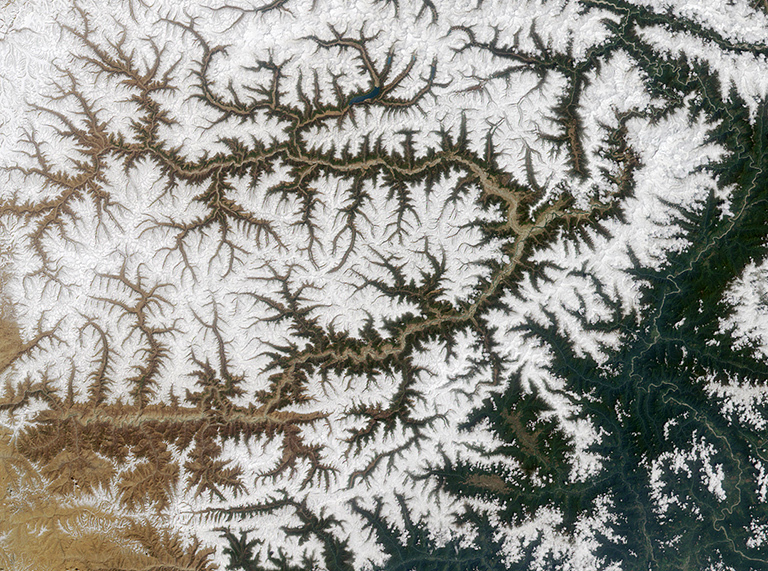Ask NASA Climate | November 29, 2016, 09:15 PST
Writing about climate: An enduring bond between art and science

Yarlung Tsangpo River, China. Credit: NASA/GSFC/LaRC/JPL, MISR Team.
My writing teacher and I said goodbye to each other. We cried together as I told her she would live on through my writing. She already knew. Because a dark night brings another sunrise, a winter brings another spring, and a goodbye brings another hello.
No one is truly alone; we rely on other people all the time. Teamwork, backing and support aren’t optional, they’re necessities.
The first writing assignment she gave me was to open my front door and describe the first plant I saw. Through this exercise, I learned how to observe the world and make detailed descriptions of those observations, while avoiding interpretations or judgmental words like “good,” or “nice,” or “pretty.” My writing became stronger when I told the story as it was, bringing along the reader and letting us both interpret the events together. For example, instead of telling you that I had a nice weekend, I learned to tell you that I sat near a fireplace with my puppy to my left and a friend on my right, drinking lemon, mint and honey (all right, there was a tiny bit of gin in there, too) and making travel plans. Then you, the reader, can make up your own mind about how my weekend was.
My writing teacher was a writer, a composer, a film producer. She was a true artist in every sense. And I’m sure you noticed the connection between the art of writing and the art of doing science, right? Science, including the type of satellite remote sensing at which NASA excels, is based on making detailed observations and allowing those observations to tell their story. NASA spacecraft give us images of glaciers, volcanoes, forests, large cities and sea ice, among other stories of a changing planet. And it’s up to us to see the details in those stories. When the images—the stories—have enough detail, we can interpret them and make meaning out of them.
When I think about how her life flows through me and out into the world, I also think about how we at NASA are part of a continuous stream of creative endeavors, of science, of aspirations achieved—each one built upon those who came before, and each one a step for the next ones to climb.
Thank you for reading.
Laura
